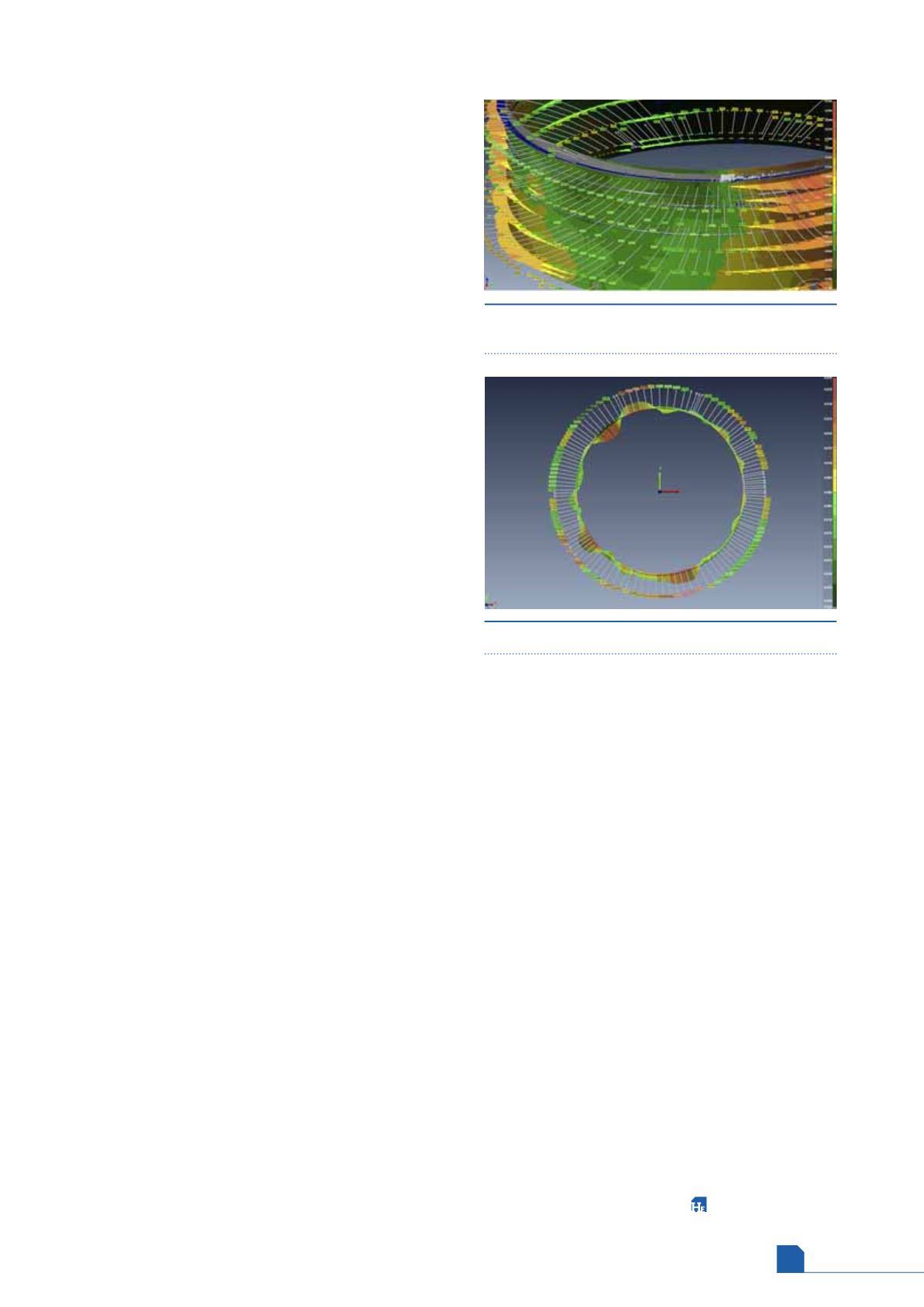
March
2017
HYDROCARBON
ENGINEERING
139
level’ and ‘total station’ methods. Furthermore, a
bottom edge differential settlement allows scanning
from within the tank, determining localised movement
of the tank floor plate. Internal structural data,
including floating roof drainage lines, etc., can also be
scanned and presented separately to clients.
Case study
A leading storage terminal based in the UK has
implemented 3D laser scanning. It has helped to save
the operators time previously spent on draughting
plant layouts and piping and instrumentation
diagrams/drawings (P&IDs). It has also eliminated the
time involved in the logistics of getting to and from
the process plant and conducting comprehensive
surveys. The technology provides quick reference
whilst discussing issues that need to be addressed
within the plant, generally eliminating the need to visit
the location in question. Other additional benefits of
the technology that have yet to be exploited at the
terminal include training and presentations. However, a
representative at the terminal mentioned that 3D laser
scanning does not always totally negate the need to
physically visit the plant.
The potential for 3D video fly-throughs – or
drones – to be used as a commercial tool was further
highlighted by the terminal’s commercial team, who
complimented the technology’s effectiveness as a
visual aid during technical presentations to clients and
in training programmes for personnel.
Over the last 18 months, ALS provided 3D laser
scanning services to terminals and industrial facilities
across the UK, including several recent projects for
terminals and refineries. There has also been a growing
appreciation of the benefits that 3D laser scanning
technology can bring to the oil products sector,
particularly with regards to applications for pipework
modelling and storage tank analysis. ALS’ ability to
prepare an inexpensive and detailed ‘in-service’ health
check on customers’ tanks enables a company to make
an informed decision on where they should be
concentrating their inspection budget on localised
material thickness analysis. The rate at which tank 3D
laser scanning can be achieved ensures that the study
can be completed before any influencing factors are
allowed to change, such as temperature or tank
contents. The final reports are versatile in terms of
how they can be utilised by a company, including
assisting in company compliance with industry and
government standards and regulations.
Ongoing projects
In an ongoing project for a major UK oil refinery, ALS is
providing its 3D laser scanning service in support of the
client’s inspection programme for API 653, and its
control of major accident hazards (COMAH) legislation
compliance. The company has been commissioned to
scan 120 storage tanks, assessing tank settlement, tank
shell verticality at selected points (determined by
Engineering Equipment and Materials Users Association
[EEMUA] guidelines), shell plate radial deflection and
tank settlement. Scan files will also be used to
calculate bund volumes.
Developments
ALS is now able to assess the differential settlements
between the tank and its connected piping where
additional bending moments and loads, which were not
considered in the original design, are imparted. This is
achieved by performing several annular plate scans at a
close distance. It also requires the company conducting
the scan to employ the use of pipework modelling
techniques on local lines. The resulting modelled
pipework is offered for structural analysis, this is in
order to decide where additional support or, indeed,
expansion joints or bellows are necessary. This means
that, cumulatively, the team is now able to scan
approximately 96% of the average storage tank.
Conclusion
Laser scanning is now proven to be a trusted source of
data collection within the oil and gas industry. With the
high accuracy of data available, ALS has noticed a large
shift in client expectations and a strong demand for its
services as a cost effective solution for collecting
analytical data from the site. With the auxiliary services
such as tank calibration available, the saving on cost is
further increased in comparison to traditional methods
of analysing tank terminal assets.
Figure 4.
Detailed areas of shell plate bulge and
indentation.
Figure 5.
Plan view of detailed shell plates.








